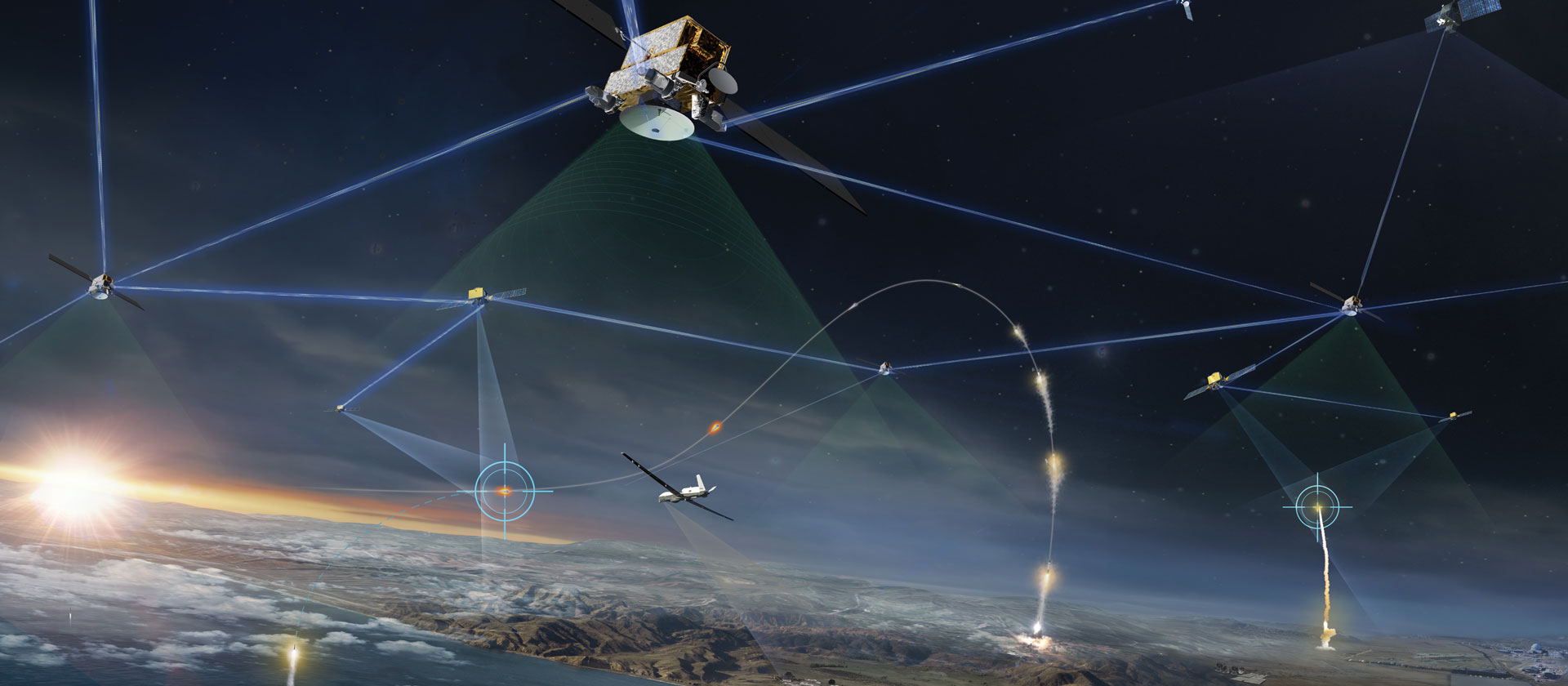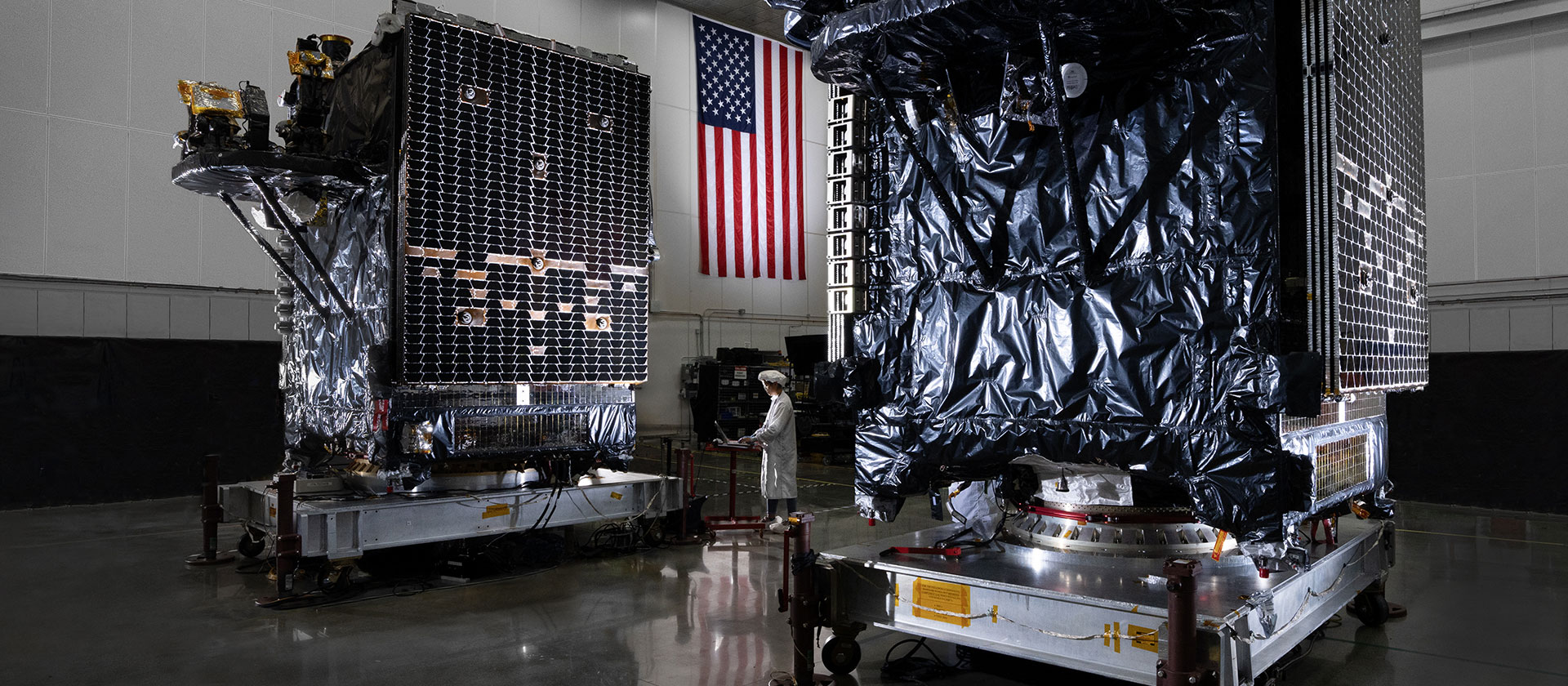Connecting the Arctic with Cutting-Edge Satellite Communications
Classic Mission, Modern Twist
How Northrop Grumman is Providing Eyes on the Sky in Low Earth Orbit

By Michelle A. Monroe
Northrop Grumman is renowned for delivering large, complex satellites into the far reaches of space, like the Arctic Satellite Broadband Mission (ASBM). Since today’s growing threats require satellites of every kind — from exquisite spacecraft to those that are smaller and more rapidly delivered — the company applied more than four decades of expertise in satellite design to completely revamp its assembly line.
Today, Northrop Grumman is producing satellites at scale on an accelerated timeline and is on track to launch more than 130 satellites into low Earth orbit (LEO) as part of the Proliferated Warfighter Space Architecture (PWSA), led by Space Development Agency (SDA).
The PWSA is a classic mission, with a modern twist — a constellation of satellites designed to detect and track missiles as well as pass data around the world with almost no lag time.
“We’ve fully embraced SDA’s rapid, go-to-market spirit,” said Louis Christen, proliferated systems director, Northrop Grumman. “We are moving quickly and with intention to produce these many satellites and put this new capability on orbit to address warfighter mission needs.”
Why LEO?
LEO is so hot right now — and we’re not talking about the 125 degrees Celsius it reaches in the sunlight.
Satellites in LEO fly at altitudes of 620 miles (1,000 kilometers) or less above Earth, much closer to the ground than satellites in other orbits. This proximity means satellites in LEO don’t need as much signal power, so they can be smaller and more cost-effective to produce.
Unlike satellites in other orbits which observe a single spot on Earth for hours, objects in LEO are whizzing by Earth at close to 5 miles per second (7 kilometers per second). That speed requires large constellations of satellites working together. Enough satellites, which in LEO means hundreds, can connect the entire globe with a resilient high-speed network.
The PWSA will play a key role in the nation’s national security architecture, which is layered across orbits. Orbital diversity — operating space assets in different orbits to support larger objectives, like national security — provides resilience, leveraging each orbit’s unique advantages.
Safety in Numbers
Consider the PWSA as Earth’s neighborhood watch, with the PWSA’s many satellites as neighbors working together to stay safe and informed — in this case, about missile threats.
Advanced ballistic missiles do not travel in predictable flight paths; hypersonic missiles travel extremely fast and can maneuver in flight, making it difficult to determine their ultimate target. Having lots of sensors in LEO — closer to where missiles travel — improves sensing, providing better missile warning and tracking data for decisionmakers and playing a key role in an integrated, layered homeland defense architecture.
In addition to a missile warning and tracking network, the PWSA will have a data transport satellite network giving U.S. troops global, resilient high-speed satellite communications for their full spectrum of missions.
“We are confident in our unique ability to help SDA provide worldwide threat detection, communications and navigation to U.S. forces,” Louis said. “With an extensive history of providing end-to-end systems, we have the knowledge bank, tools and people to answer the call.”
Smaller, Faster, Evolvable
In today’s evolving space landscape, speed and scalability aren’t just advantages, they’re necessities. To answer SDA’s call for scalable, proliferated LEO delivered with speed and quality, Northrop Grumman engaged a team of cross-industry suppliers and completely revamped its satellite production line to build not one, but a dozen satellites at a time.
“These programs presented an exciting opportunity to challenge conventional rules,” Louis said. “We scaled our systems at a rapid pace while maintaining the high quality and standards that define Northrop Grumman.”
The PWSA network is designed for evolution, with upgraded tranches — including satellites and ground systems that are backward-compatible — launched every two years. In 2025, Northrop Grumman plans to deliver 42 satellites for SDA’s first operational tranche and is working in parallel on the next generation, applying emerging technology to keep ahead of the threat.
“We are always looking for new ways to build upon and integrate the right technologies for our customer’s missions, leveraging our know-how, legacy technologies and capabilities,” said Blake Bullock, vice president, Military Space Systems, Northrop Grumman. “Addressing tomorrow’s evolving threats requires new solutions. This was an incredible opportunity to demonstrate what it means to define possible.”
This research was, in part, funded by the U.S. Government. The views and conclusions contained in this document are those of the authors and should not be interpreted as representing the official policies, either expressed or implied, of the U.S. Government.


